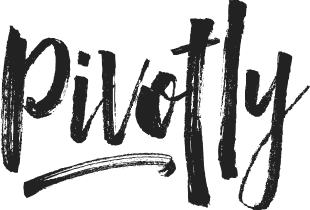
The Joy of Leadership: Leading Through Uncertainty
Most leaders plan for uncertainty.
Few realise they’re already leading in it every day.
Markets shift faster than plans, technologies outpace processes, and unexpected events redefine what “normal” means. Yet, amid all this, people still look to leaders for direction, trust, and steadiness.
After more than two decades in executive and coaching roles, I’ve learned that uncertainty doesn’t destroy leadership — it reveals it. It shows what truly anchors a leader when everything else is in motion.
1. From Control to Clarity
When change accelerates, our natural instinct is to tighten control.
We add rules, track metrics, and hold more meetings — hoping that order will return.
But control rarely brings stability; it often amplifies anxiety.
Focus, on the other hand, restores perspective even when circumstances stay unstable.
Leaders who communicate transparently, repeat direction without fatigue, and give people permission to make local decisions often see engagement rise when others freeze.
In coaching, I sometimes call this the “slow down to speed up” principle — taking a deliberate pause to realign before moving. Paradoxically, slowing down is often the fastest way forward.
2. Composed Leadership as a Competitive Edge
Composure is not passivity; it’s clarity under pressure.
In uncertain times, composed leaders don’t suppress emotion — they manage energy.
They make space for reflection before reaction.
In my experience, composed leadership rests on three steady anchors:
Focus: Define what truly matters in the next 90 days.
Feedback: Keep dialogue alive — silence breeds fear.
Rhythm: Create routines that provide predictability — short check-ins, small wins, shared visibility.
These anchors turn tension into alignment. And that’s where real performance begins to return.
3. Case Example: Lindström Group
A few years ago, during a period of major internal transformation, the Nordic service company Lindström Group faced exactly that kind of uncertainty.
The organisation was implementing structural reforms, building new service models, and elevating a generation of younger leaders — just as the world entered the COVID era.
Our collaboration focused on helping the leadership team stay grounded and connected through change.
Instead of reacting to every disruption, we worked on strengthening reflection, dialogue, and coaching habits across teams.
Over time, these routines created visible momentum and calm confidence even as plans continued to evolve.
“Argo is a powerhouse of inspiration. He has an uncanny ability to deeply understand every person in their unique authenticity, uncovering their best personality traits, and skillfully combining them with their developmental potential to help them achieve success and personal growth… His unwavering consistency and detailed plans provide both the leader and the employee with a clear path to success.”
— Kadrian Jaagund-Ratasepp, Senior Vice President, Lindström Group
You can read the full story about this collaboration here:
Leadership that Unlocks Team Potential →
That experience reaffirmed something I’ve witnessed many times:
people don’t need perfect plans in uncertain times — they need visible leadership presence, honest dialogue, and the confidence to act without full information.
4. Lessons for Leaders Navigating Uncertainty
Here are four reflections that continue to guide many of the leaders I work with:
Focus on direction, not prediction.
You don’t have to know what’s next — only what matters most now.Anchor in purpose and people.
Purpose gives meaning; people give movement. Together they build resilience.Communicate more than feels necessary.
In uncertainty, silence multiplies doubt. Repetition creates safety.Recover as intentionally as you perform.
Balance isn’t found by chance — it’s built through conscious recovery.
5. Final Reflection
Uncertainty will never leave our leadership landscape.
But it doesn’t have to define our confidence.
When we lead with steadiness and focus, we offer something stronger than certainty — we offer trust.
That, to me, is the quiet strength every team looks for in a storm.
FAQ
Q1. How do calm leaders stay grounded under pressure?
They prepare before the storm hits — establishing reflection habits and clear rhythms that hold them steady when challenges escalate. Calm is not born in crisis; it’s trained daily.
Q2. How can teams stay connected in uncertainty?
By sharing context openly and allowing small, local decisions. When people understand why, they adapt how far more easily.
Q3. What makes resilience more valuable than control?
Because control breaks when conditions change; resilience adjusts, learns, and endures. It’s not rigidity but readiness that sustains leadership.
Call to Action
If your organisation is navigating rapid change or facing new realities, let’s explore together how calm and clarity can become your competitive advantage.
